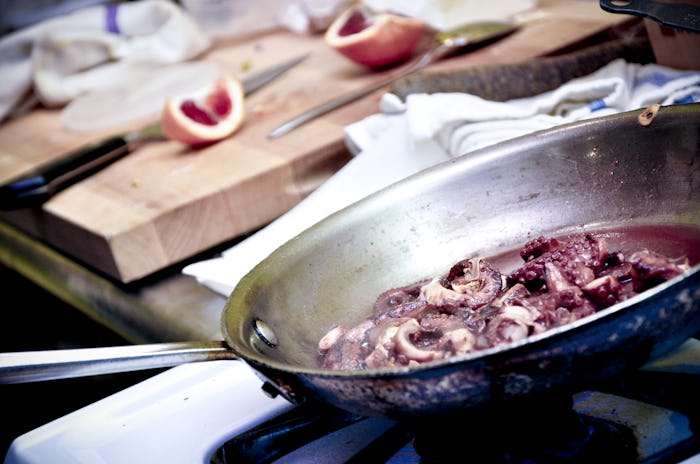Preparing for childbirth is no joke. Even if you're a more relaxed mom-to-be who's prepared to go with the flow, there are still questions you have to answer. Where will you deliver? What kind of delivery are you aiming for? Do you think you'll want an epidural? All fairly common questions, but they can leave you in a bit of a panic. And now, you've got another thing to figure out — how to eat your placenta.
OK, technically that only applies to those who want to eat their placenta. I was not one of those people, so I let mine get carted off with the rest of the evidence that I had given birth. (Except for, you know, the baby.) But according to BBC News, many believe that the placenta packs a lot of nutrients that can help with breast milk supply, energy, and even avoiding postpartum depression.
What to Expect notes that there actually hasn't been any scientific evidence backing up the claims that this practice of eating the placenta actually helps humans, but because most other mammals eat their afterbirth, it doesn't necessarily seem like a no-no either.
Regardless, if you've talked to your midwife or doctor and have determined that eating your placenta is something you want to do, then by all means, girl. Get your grub on. But how do you actually eat your placenta? Do you need to pack a steak knife and a bottle of hot sauce in your hospital bag?
Well, technically, I guess you could. There are a few different ways to chow down on your placenta. Many women opt for eating it raw so they can make sure they aren't cooking out any of the nutrients. The Doula Services Network notes on their website that because the placenta is to be eaten over a few days, you can either chop it up and eat small pieces raw, or you can freeze it. If you freeze it, many women opt for throwing it into a smoothie to mask the metallic taste and to make it a little easier to get down.
If you're not into raw meat, you can also cook your placenta just like any kind of meat you'd get from the butcher according to Mother & Baby. Roast it, saute it, flavor it with garlic and herbs — the possibilities are endless. You can even use it in place of meat in your favorite pasta dishes like spaghetti or lasagna. Just keep in mind that because it's a meat, it can spoil, so you'll want to cook it fairly quickly.
An even easier option is to have your placenta encapsulated. According to What to Expect, this requires grinding your dried placenta up into a powder and putting in to a pill that you can take each day.
No matter how you choose to eat, you'll want to discuss your plan with your midwife and possibly hire a professional placenta preparer. You'll also need to clear things with the hospital if you deliver there, as most of them categorize your placenta as medical waste and will toss it without further instructions.
